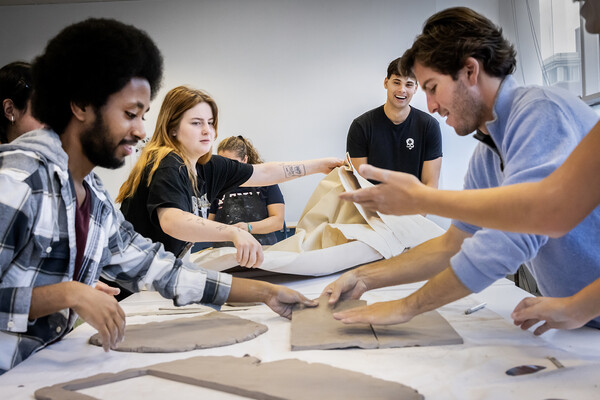No 'miracles' in the desert
The historians and journalists who have written about the Arabian American Oil Company in years past have generally told the same story: It’s a story of how American businessmen took on a missionary role in Saudi Arabia, helping to raise up a nation while at the same time building an oil powerhouse.
Robert Vitalis knows those stories well. There’s just one problem.
“None of these stories that have been told over and over and over again hold true,” explains Vitalis, a Penn associate professor of political science. “I found there was a different story to be told.”
Vitalis finally tells that untold story in his new book, “America’s Kingdom: Mythmaking on the Saudi Oil Frontier.” The book casts new light on U.S.-Saudi relations, delves deeply into the history of ARAMCO and makes the case that those oft-repeated myths about ARAMCO’s “missionary” work—some claimed the company worked “miracles in the desert”— are mostly false.
In fact, Vitalis argues that the American oilmen who built their empire early last century did so, in part, by instituting a “Jim Crow system” in the Dhahran oil camps. Further, he argues that social progress and change was enacted at the camps only because the oil powers’ hand was forced—and not because its leaders were progressive thinkers.
“The old stories get repeated more or less today by all the historians and journalists,” Vitalis says. “Nobody has ever challenged this. They’ve just accepted it point blank. But it’s not true.”
While researching the book, Vitalis conducted interviews with ARAMCO employees and U.S. officials and combed through some revealing documents. Along the way, he discovered the actions of ARAMCO were all too typical: Just as oil companies had done earlier in California, Venezuela and Mexico, and just as copper mining barons had done in Rhodesia, ARAMCO turned itself into a power while treating its workers poorly.
The Dhahran oil camps were built, says Vitalis, on an institutional racism that had been serving mining interests for decades.
“The pattern I’m uncovering in Saudi Arabia in the 1930s is a pattern that nobody reads for what it is,” Vitalis says. “This hierarchy, it turns out, is a pattern we see in oil camps and mining camps across the 19th century. Copper miners did the same thing. Dhahran is just the last moment in a very long legacy of this hierarchy, basically.”
Vitalis says Dhahran was basically a “company town” that functioned under a system of ARAMCO-sponsored “racism or apartheid.” Work life and private life were kept separate, and Americans in the town lived apart from the Saudis. While the Americans in Dhahran enjoyed a comfortable life there, the locals were subjected to trying conditions and poor amenities.
“The Americans built the system this way,” Vitalis says.
Given all that Vitalis has discovered about the reality of ARAMCO, one question remains: How did the myth of the missionary ARAMCO begin in the first place, especially if it was so off the mark?
Vitalis says he believes the old stories were probably rooted in American exceptionalism—the idea that America is unlike any other nation.
When the first journalists and writers penned laudatory stories about the company early last century, they did so under the belief that the Americans weren’t like, for instance, the British. These influence peddlers really believed American business was different.
Those stories stuck. And they stuck, in part, because of America’s ongoing battle with racism—and some Americans’ unwillingness to confront the nation’s past wrongs.
“We’re no longer overtly racist, we just don’t talk about it,” Vitalis says.
Originally published on November 2, 2006.






